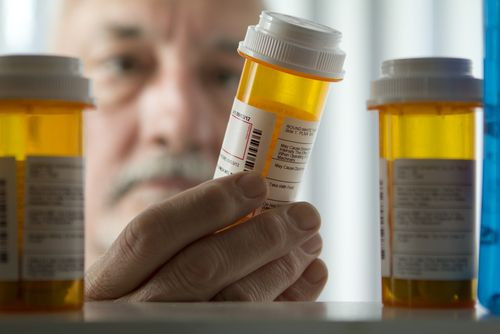Prescription Drug Take-Back Day 2014: How Properly Disposing Of Prescription Meds Can Help Save Lives, And Your Drinking Water

This Saturday, Sept. 27, is the ninth National Prescription Drug Take-Back Day. Between 10 a.m. and 2 p.m. local time, you can take your expired, unneeded, or unwanted prescription drugs to one of over 5,200 collection sites across the country. To find the nearest collection site, call 800-882-9539 or visit www.dea.gov and click on the “Got Drugs?” icon. Although sponsored by the Drug Enforcement Administration (DEA), the service is anonymous, with no questions asked.
Drugs In My Drinking Water?
A now famous investigation conducted by The Associated Press found minute concentrations of pharmaceutical drugs in the drinking water of 24 major metropolitan areas. Testing confirmed more than 100 different drugs in surface water. Levels are very low, but experts debate the potential health effects. While some scientists say these minimal concentrations pose no problem to you and your family, others suggest it’s impossible to discount possible harm caused by this.
Meanwhile, the urban legend aspect of drinking water contamination is many people believe this situation is caused entirely by people who flush their unused drugs down the toilet. Well, that's not the case. There are many ways in which medication can make its way into the drinking water supply, including after the usual kind of disposal. Sewage treatment plants were designed to destroy microbes and disease-causing pathogens, but they lack the ability to filter pharmaceuticals from water. Meanwhile, hospitals and long-term care facilities throw away, on average, 250 pounds of unused drugs (and contaminated packaging) annually. Most of these pills go into landfills or down the drain and eventually wind up in the drinking water supply.
Though water contamination is an important reason to properly dispose of your unused meds this Saturday, another excellent reason for doing so is that unused drugs sitting in your medicine chest can be stolen, misused, or even accidentally ingested by a child. Among the 22,134 Americans who died in connection to prescription drugs in 2011, a full 16,651 overdosed on painkillers, according to the Centers for Disease Control and Prevention. Worse, the number of Americans who abuse prescription drugs in 2013 amounted to 6.5 million — more than double the number of those using heroin, cocaine, and hallucinogens like LSD and Ecstasy combined. The majority of these abused pharmaceutical drugs are obtained from family and friends and in many cases are filched from someone’s bathroom, according to the 2013 National Survey on Drug Use and Health.
Since its first National Take Back Day in 2010, DEA has collected more than 4.1 million pounds (over 2,100 tons) of prescription drugs throughout the nation. However, in the months after its first public event, congress enacted the Secure and Responsible Drug Disposal Act of 2010, which in part created authorized collectors as safe points of disposal in each community. Going forward, the DEA expects these authorized collectors to advertise and provide this service at the convenience of their individual communities.
Meanwhile, there’s still the matter of very slight water contamination. Surprisingly, while the drinking water supply in some areas tested positive for trace amounts of pharmaceutical drugs, others, including Seattle, Tulsa, and Boston, tested negative. It is unlikely people in these metropolitan areas are disposing substantially less pharmaceutical drugs than people in other areas, so the likeliest explanation is their sewage treatment facilities are somehow better equipped. One way to solve this problem, then, would be to understand what they are doing right and follow suit in other parts of the country.
Published by Medicaldaily.com



























